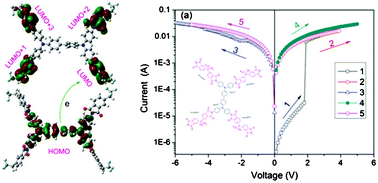Nonvolatile write-once read-many-times memory device based on an aromatic hyperbranched polyimide bearing triphenylamine moieties
Abstract
An aromatic hyperbranched polyimide, poly(N,N,N′,N′-tetrakis(4-aminophenyl)benzidine-N,N-

* Corresponding authors
a
State Key Laboratory of Chemical Resource Engineering, Beijing University of Chemical Technology, Beijing 100029, China
E-mail:
qisl@mail.buct.edu.cn
Fax: +86 10 6442 1693
Tel: +86 10 6442 4654
An aromatic hyperbranched polyimide, poly(N,N,N′,N′-tetrakis(4-aminophenyl)benzidine-N,N-

 Please wait while we load your content...
Something went wrong. Try again?
Please wait while we load your content...
Something went wrong. Try again?
F. Chen, G. Tian, L. Shi, S. Qi and D. Wu, RSC Adv., 2012, 2, 12879 DOI: 10.1039/C2RA21885B
To request permission to reproduce material from this article, please go to the Copyright Clearance Center request page.
If you are an author contributing to an RSC publication, you do not need to request permission provided correct acknowledgement is given.
If you are the author of this article, you do not need to request permission to reproduce figures and diagrams provided correct acknowledgement is given. If you want to reproduce the whole article in a third-party publication (excluding your thesis/dissertation for which permission is not required) please go to the Copyright Clearance Center request page.
Read more about how to correctly acknowledge RSC content.
 Fetching data from CrossRef.
Fetching data from CrossRef.
This may take some time to load.
Loading related content
